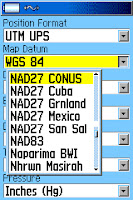The following is an article from www.news.discovery.com. The writer is Emily Sohn.
She asks a very interesting question. Do we trust our technology too much?
"Getting lost in the wilderness can be terrifying, even tragic. It can also be perplexing, as with a recent case in a remote area of Nevada.
A little over a week ago, a woman was rescued on the verge of death after being stranded for nearly two months on muddy back roads in the northeastern part of the state. Her husband, who walked off looking for help, is still missing. The most baffling part of the story: The couple had a GPS device. And they were following its directions when they got lost.
It’s not the first time that blind faith in a GPS has led people astray and into big trouble. And given the growing influence of computer technology on our lives, experts say, it’s not that surprising. As we become ever more reliant on digital devices, the relationship between humankind and the wilderness is rapidly shifting.
Armed with a GPS, in particular, many people ignore notice ridge lines, stream routes and landscape contours, said Bill Borrie, a wilderness researcher at the University of Montana, Missoula. Most also fail to learn critical wilderness survival skills in the first place."
To read the complete article go here.









 Delorme has announced their long-awaited two-way satellite messaging device, the inReach. Unlike Delorme’s first SEND, which was a SPOT product that utilizes the Globalstar satellite system one-way messaging capability, inReach works on the Iridium system that provides full two-way communication, with obvious benefits
Delorme has announced their long-awaited two-way satellite messaging device, the inReach. Unlike Delorme’s first SEND, which was a SPOT product that utilizes the Globalstar satellite system one-way messaging capability, inReach works on the Iridium system that provides full two-way communication, with obvious benefits

